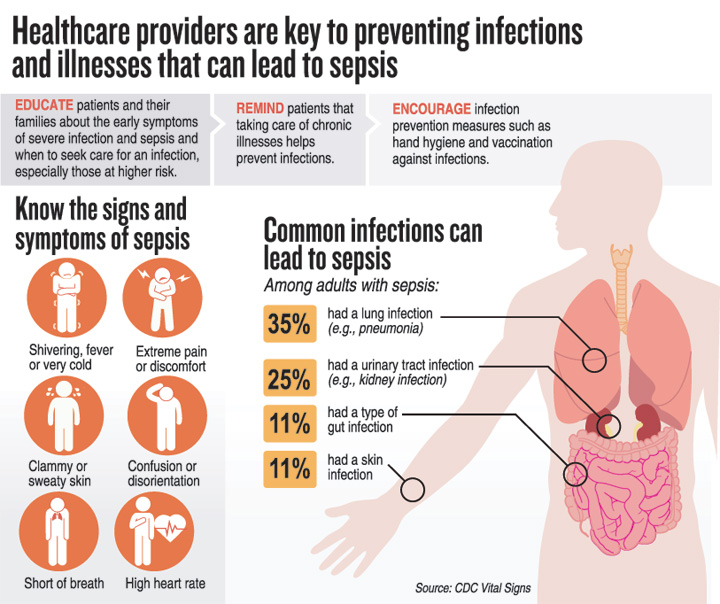News
Need for high alert for killer sepsis
View(s):Tuesday is World Sepsis Day
By Kumudini Hettiarachchi
Sepsis by any other name is still sepsis and kills people. Earlier, it was known as ‘hectic fever’, then ‘septicaemia’ and also ‘bacteraemia’
“It will make a difference between life and death if sepsis is suspected at the ‘first point of contact’ if a patient presents with certain symptoms and treatment is begun immediately,” reiterates Consultant Microbiologist Dr. Mahen Kothalawala of the National Hospital of Sri Lanka (NHSL).
Every 10 seconds, somebody somewhere dies of sepsis and it could very well be anyone of us! This is why September 13 (Tuesday) has been earmarked as World Sepsis Day.
Pointing out that sepsis is way below the radar unlike other diseases, Dr. Kothalawala says that it has not been given its deadly and due place among health issues affecting people. The harm it causes is ‘under-appreciated’, ‘under-valued’ and ‘under-studied’.
“In about 95% of cases, sepsis follows a bacterial infection and in the balance 5% it is due to a viral, fungal or parasitic infection,” he says, explaining that sepsis is due to a dis-regulation in the body’s immune response to an infection.
He says that when a foreign invader (organism such as a bacterium, virus, fungus or parasite) enters a person’s body, any system such as the circulatory system which carries blood or even an organ such as the lungs, which are the ‘portal of entry’ would mount an inflammatory response to protect that person. The immune system would send out cytokines in a controlled manner to fight the invader and suppress it.
“However, in sepsis, without having a controlled cytokine response, there is a surge or a cytokine storm and the person is unable to tolerate this inflammatory response,” says Dr. Kothalawala.
The dis-regulation of the immune system leads to:
- Immediate over-reaction – hyper
- Later an under-reaction – hypo
“Initially, there is over-reaction on the part of the immune system and later during the course of the illness, suppression of the immune system. Sepsis is bi-phasic,” he says.
In the acute phase, there is respiratory (breathing) difficulty, coagulation issues, and a liver and renal impact. There is multi-organ dysfunction followed by multi-system failure.
Who is vulnerable to sepsis? Among those in the high-risk group are:
- Neonates (a newborn or an infant less than four weeks) and the very young
- The elderly
- People who are immune-compromised
- People who have spleen malignancies, trauma to the spleen or congenital issues with the spleen
- Women who are pregnant
- Those suffering from cancer
The signs and symptoms of severe sepsis or septic shock are:
- Feeling dizzy or faint
- A change in a person’s mental state – like confusion or disorientation
- Diarrhoea
- Nausea and vomiting
- Slurred speech
- Severe muscle pain
- Severe breathlessness
- Less urine production than normal – such as not passing urine for a day

| ‘Bundle of 6’ in first hour vital to fight sepsis Prevention of sepsis is through vaccination against infections such as COVID-19, pneumococcal, influenza (flu brought on by a virus) and haemophilus flu (brought on by a bacterium), according to Dr. Mahen Kothalawala. The other measures which help are improving sanitation to avoid contracting typhoid-like illness and keeping the environment clean to ward off dengue or malaria help, it is learnt. The protocol needed within the very first golden hour (60 minutes), reiterates Dr. Kothalawala, consists of a ‘Bundle of 6’ named ‘Sepsis 6’.
“These six steps improve survival rates immensely. If there is a delay, even if the patient is taken to the Intensive Care Unit (ICU), survival drops by 40-50%,” says Dr. Kothalawala. He urges: “This is also why, if there are symptoms, people and healthcare personnel need to question whether it is sepsis. If sepsis, the patient needs multi-disciplinary care at the hospital.” | |
| Early detection is key Early detection, treatment and good management are of paramount importance, says Dr. Mahen Kothalawala, stressing that this is the “key” to survival for a person with deadly sepsis. A delay of one hour in the treatment of a patient with sepsis increases the odds of that person dying by 7.6%, he laments, pointing out that early aggressive resuscitation of a patient at the ‘first point of contact’ followed by the prompt administration of antibiotics and supportive care can pull that person back from the brink of death. The first point of contact could be a General Practitioner (GP) the person seeks treatment from; a peripheral hospital or the Outpatients’ Department (OPD) of a bigger hospital. “Unlike other diseases, sepsis is difficult to detect early but easy to treat early; easy to diagnose late but difficult to treat,” he adds.
|
The best way to say that you found the home of your dreams is by finding it on Hitad.lk. We have listings for apartments for sale or rent in Sri Lanka, no matter what locale you're looking for! Whether you live in Colombo, Galle, Kandy, Matara, Jaffna and more - we've got them all!

